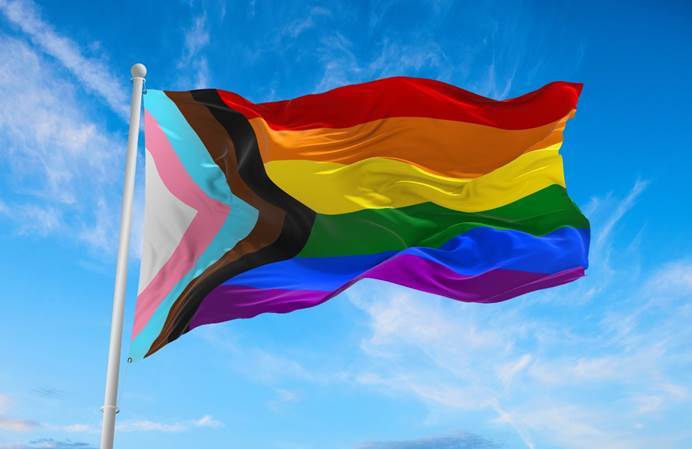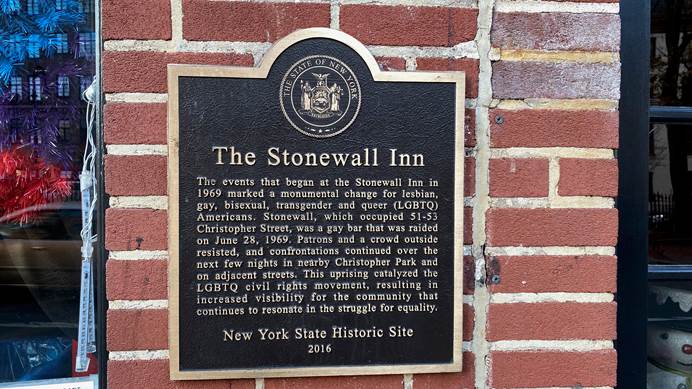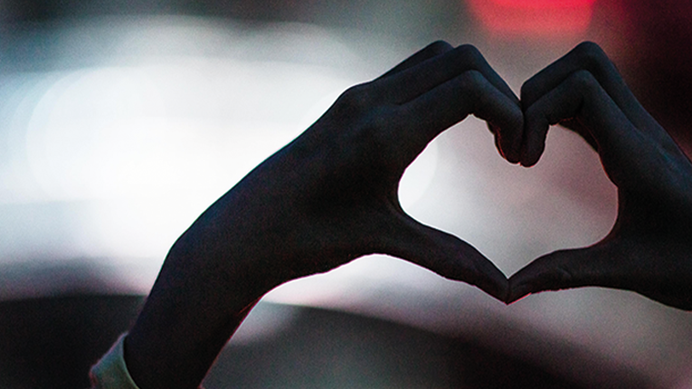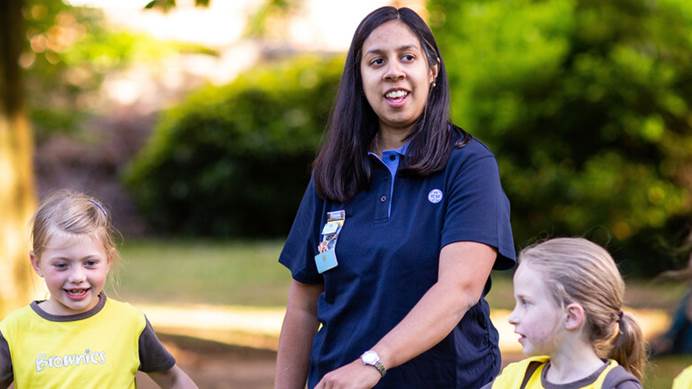Activities to celebrate Pride without going to a parade
Show your pride this June with these crafts, badges and activity ideas
Originally published June 2021. Updated: 10 June 2024
June is Pride Month – a time to celebrate the LGBTQ+ (lesbian, gay, bisexual, transgender and queer) community, while raising awareness of issues still affecting LGBTQ+ people.
Each year, there are colourful Pride parades, marches and events across the country. But not everyone celebrates Pride this way. Whether there are no parades in your town, or you just don’t enjoy crowds and loud noises, there are many reasons why you may not be attending a big Pride event. But that doesn’t mean you can’t still show your pride this June!
From learning about the history of Pride and LGBTQ+ activism, to colourful crafts, there are so many ways to mark this special month either at home or with your unit. Check out our ideas and celebrate Pride your own way this year.
Inclusion-themed activities and badges to do this Pride month
Rainbows
- Fuzzy feelings helps Rainbows to identify if someone feels left out, then explore ways to include everyone.
Brownies
- The my rights badge gets Brownies inspired to raise their voices and know their rights.
- In Brownie town, Brownies build the ultimate town where everyone is welcome and can live together happily.
Guides
- The campaigning badge is all about getting your voice heard by people in power, and making change happen – whether on LGBTQ+ issues, or any other topic that’s important to you.
- In my support chain, Guides think about ways to challenge discrimination in safe ways and create their own support chain.
Rangers
- The protesting badge gets Rangers to think about issues that matter to them and protest in different ways. That doesn’t have to involve going to a protest march- it could be through things like writing letters, making social media posts or boycotting.
- With the morals and values badge, Rangers will think about things that are important to them, think about how their values influence their daily lives, and take steps to put their morals and values into action.
- Allies unite! gets Rangers to create an allyship manifesto and create their vision for an inclusive future for all.
Other activities to celebrate Pride at home or with your unit
1. Make your own Pride flag
The iconic rainbow Pride flag was originally created by Gilbert Baker, an artist and LGBTQ+ activist from San Francisco. Each of the colours has its own meaning:
- Red – life.
- Orange – healing.
- Yellow – sunlight.
- Green – nature.
- Blue – serenity.
- Purple - spirit.
Over the years, many different versions of the flag have been created to represent different communities and groups. A popular version is the Progress flag, designed by Daniel Quasar. As well as the rainbow, it has an arrow with colours representing trans people, people of colour, and people who have died from or are living with HIV/AIDS.

Why not get crafty and colourful to create your own version of the rainbow flag? Here are some ideas to get you started:
- Blow your own. Pour out your paint (in red, orange, yellow, green, blue and purple) in stripes on a piece of paper. Leave a bit of white space between each colour. Next, grab a straw and start blowing! Direct your breath to spread the paint and shape your rainbow flag.
- Bake the rainbow. Have a rainbow for breakfast! Try making a stack of colourful pancakes by adding food colouring to the batter before cooking. Or make fruit kebabs by arranging fruits of different colours on sticks - we recommend raspberries, strawberries, orange pieces, mango, pineapple, kiwi, grapes and blueberries to enjoy all the colours of the rainbow in a delicious snack.
2. Learn about the history and meaning of Pride
Pride month is a great time to learn about the history of LGBTQ+ activism, and the people who can inspire us all to speak out and take action today. It can also be great inspiration for the campaigning, protesting and my rights badges!
Look out for articles or documentaries about the following people and events:
- Marsha P Johnson and Stormé DeLarverie played a key part in the Stonewall uprising, the event that transformed the LGBTQ+ rights movement in 1969.
- The protest group Act Up campaigned for better research and treatment during the HIV/AIDS epidemic in the 1980s. They used creative protest actions and striking poster designs by LGBTQ+ artists like Keith Haring.
- In 1988, the British government passed a law called Section 28 that stopped schools and local authorities from talking about, or giving money to, LGBTQ+ communities. Many women were at the forefront of protesting against Section 28. Booan Temple famously ran onto the set of BBC News. Sally Francis joined a group of lesbian campaigners who abseiled into the House of Lords. Other women took inspiration from the suffragettes by chaining themselves to the railings at Buckingham Palace. Section 28 was finally repealed in 2000-2003.

3. Look to the future of LGBTQ+ rights with a group discussion
It’s important to understand our history, but who are the LGBTQ+ icons making change and inspiring us today? Talk to girls about their pride role models and encourage everyone to share what they’ve discovered.
You could discuss things like:
- Who’s making a difference right now? It could be famous people, characters in films or books, or someone in your life or local community.
- What about them inspires you?
- Can you learn anything from them to bring into your own life?
4. Read books about LGBTQ+ lives and stories
Explore LGBTQ+ stories with books for all ages. You could read and talk about these titles in a special Pride book club.
- ‘Julian is a Mermaid’ by Jessica Love. Younger girls can learn about individuality and being themselves – and enjoy the beautiful illustrations.
- ‘Grandad’s Camper’ by Harry Woodgate. Grandad tells his granddaughter about his adventures travelling with world with Gramps in this picture book celebrating LGBTQ+ families. Harry reads the story and shows us a great drawing activity in this storytime video.
- ‘From Prejudice to Pride: A History of the LGBTQ+ Movement’ by Amy Lamé. Guides and Rangers can explore history in this inspiring book.
- Older girls who like reading novels will enjoy ‘Every Day’ by David Levithan or ‘The Miseducation of Cameron Post’ by Emily M Danforth, which has also been adapted into a film.
You can find great LGBTQ+ books for every age group in these fantastic Pride month reading lists from Words for Life.
5. Make a difference for LGBTQ+ people by volunteering
If you’re a Girlguiding volunteer and want to make a positive impact for LGBTQ+ people in your community, you could check locally if there are any inclusion roles available. You’ll help our members provide a safe, girl-only space where all girls and young women can discover their full potential through all areas of the programme, regardless of their background.



